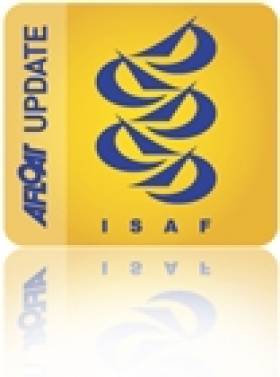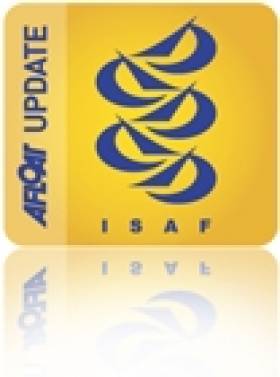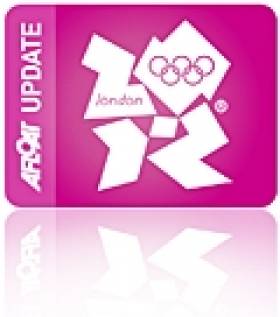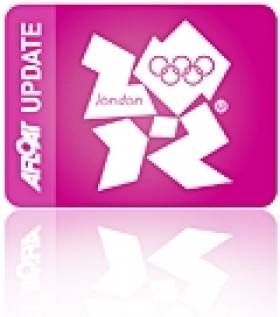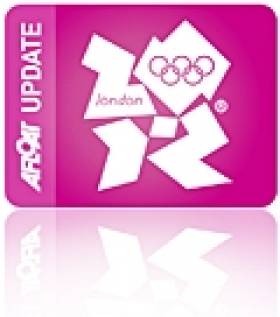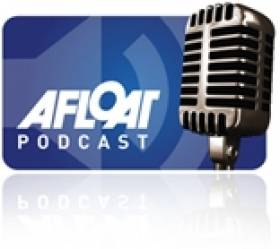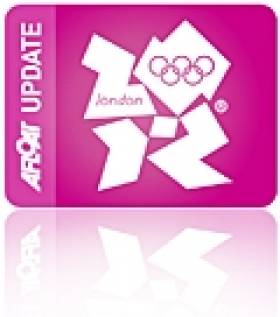Displaying items by tag: Olympic
No Recommendation for Mens Keelboat Poses Problem for Star
There was big news yesterday from the ISAF events committee meeting in Athens. The conference blog reports A 'packed session' heard the Events Committee's recommendation on the provisional Olympic events and equipment for 2016.
The Events Committee recommends:
- Board or kite-board for men and women - equipment evaluation
- One person dinghy men - Laser Standard
- One person dinghy women - Laser Radial
- Two person dinghy (skiff) men - 49er
- Two person dinghy (skiff) women - equipment evaluation
- Second one person dinghy men - Finn
- Two person mixed multihull - equipment evaluation
- Two person mixed dinghy with spinnaker - 470
- Women's keelboat - Elliott 6m
In so doing the committee's voting recommends taking out the men's keelboat. The second one person dinghy for women was the other option not to be selected.
The Committee's recommendations are of course just that. They will go to the ISAF Council for consideration this weekend. After Council vote they are then subject to confirmation at the ISAF Mid-Year meeting in May 2011.
Finn Dinghy Vid Proves a Big Hit
After the Finn class released its video 'Sailing at its best' on YouTube last week, the response has been nothing short of phenomenal say the class officials. The video is part of a campaign to ISAF to keep the class an Olympic dinghy and the chips are down. To date more than 17,500 views have been recorded from more than 110 countries.
According to YouTube Insight statistics it is the second most viewed sailing video over the past month.
If you haven't seen it yet then check it out on the Afloat home page, scroll down to the bottom of this post or click HERE
The video is just a small part of the classes enhanced media plan. Class President Balazs Hajdu wrote earlier this year, "Today the sailing community realises that media appeal is not only about what you broadcast but also about how you broadcast. By making footage and coverage on Finn races so comprehensive, continuous, available and ground breaking, the International Finn Association brings a message that the Finn is not only a great Olympic class showing close, tactical and fair competition for fit, healthy and heavier elite sportsmen at the top of their game but also that the sport of sailing is able to deliver the media requirements of the IOC and the broadcasters."
Comments posted online about the 2 minute and 40 second video have backed this up
- Outstanding video. This is the pinnacle of dinghy sailing captured on video.
- Fantastic sailing video. This is really promoting Olympic Sailing
- Without a doubt one of the best sailing videos EVER.
- This is simply awesome! Never thought Olympic and small boats sailing is so cool. GREAT GREAT GREAT GREAT
- This is just fantastic! This is actually what we want to see from Olympic Sailing.
- The more I watch it the more I love it.
Die hard Finn fans will also be pleased to know that a longer version is in production and will be released later this month.
Ireland Guaranteed Medal in the Star Class Today (Podcast here)
Ireland is guaranteed a medal today at the British Skandia Sail for Gold regatta in the Star class but Peter O'Leary's clean run in the keelboat this week was not without drama yesterday when his crew Fritjof Kleen slipped overboard 300 metres from the finish line.
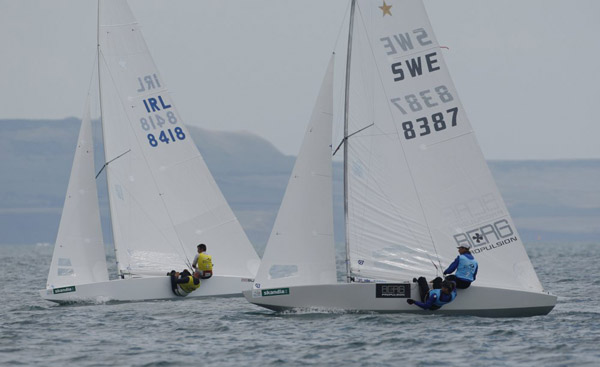
Peter O'Leary and Frithjof Kleen (IRL) against Fredrik Loof and Johan Tillannder (SWE) in the Star class on day 5 of the Skandia Sail for Gold Regatta. Photo: onEdition
O'Leary's New German Crew Makes his Mark in Weymouth
Royal Cork's Peter O'Leary and his stand in German crew Frithjof Kleen are 13th overall after two races in the Skandia Sail for Gold regatta at Weymouth. O'Leary's rival for the Irish Star nomination at the Olympic regatta in two years time fared less well in the opening breezy rounds; Max Treacy and Anthony Shanks lie 33rd in the 36-boat fleet. There is a three way battle for Irish honours in the 91-boat Women's Laser Radial. In the qualifying rounds Annalise Murphy is racing in the blue fleet. Tiffany Brien and Saskia Tidey are both in the yellow flight. Northern Irleland's James Espey and Chris Penney are coming to terms with a full on Olympic Laser fleet of 180 boats. Full results HERE. Video at the end of this post.
It cannot have been an easy decision for the triple Olympic gold medalist, Ben Ainslie, to return to the Finn class at Skandia Sail for Gold 2010. Ainslie completely dominated the Finn, unbeaten between 2004 and 2008, winning gold medals at both the bookending Olympic regattas. Ainslie was the man who put the bite into Dennis Connor's book title, 'No Excuse to Lose'.
But right now, Ainslie has every excuse to lose; preoccupied with Team Origin campaigns in the TP52, the Louis Vuitton Trophy and the World Match Racing Tour, not to mention the little matter of being eight kilograms under his fighting weight. But an ISAF Sailing World Cup regatta at home, at the venue of the 2012 Games? How could he not compete? How could he not win? But how could he win, after so long out of the boat? Dilemma...
But Ainslie was taking it all in his stride this afternoon, "It's funny because this morning I was talking to my coach about my goals for the week, and we laughed because normally we wouldn't worry, I just want to be at the top! It is a very different week for me, because it's not about where I place, it's about rejoining the Finn fleet, seeing how it has progressed and learning about the conditions in Weymouth." And perhaps unsurprisingly, after a shaky first race, Ainslie was right back in the hunt for the second, and finished fourth for the day. Watch this space.
Things went less smoothly for his barely-less-gilded tactician at Team Origin, the double Olympic gold medalist, Iain Percy, and his crew, Andrew Simpson. They were also returning to the boat after a lay-off due to duties with Team Origin – although not such a long one, they are the reigning Star World Champions. But they broke a forestay before the first race, and had to come ashore to fix it, returning to the line two minutes after everyone else had started the second race - eventually finishing 21st. Simpson said afterwards, "Realistically you can't predict a forestay break like we had today, there is just an element of bad luck involved in these things but it's part of the game. But we went out there afterwards, we fought back and managed to take back 17 places."
The Star fleet was dominated by two more America's Cup sailors, Hamish Pepper and Craig Monk – the Kiwi duo won both races, an awesome performance in a fleet of this class. But elsewhere, things went better for Skandia Team GBR, with Nic Asher and Elliot Willis sharing the lead in the 470 Men with French duo Pierre Leboucher and Vincent Garos.
Other stand-out performances belong to Udo Hessels and Mischa Rossen in the Sonar class with two bullets. While in the 49er, Frenchmen Manu Dyen and Stephane Christidis scored two seconds. Jonathan Lobert (FRA) scored a first and a second in the Finn class, while both Marit Bouwmeester (NED) and Veronika Fenclova (CZE) won their two races in their respective Laser Radial fleets to be joint top.
More from those QuotesBen Ainslie
"I really enjoyed it today, we had some great racing even though the conditions were pretty tough for me at my current weight. But I am pleased with how it went and pleased to be racing in the Finn again and to be back at Weymouth.
"It's funny because this morning I was talking to my coach about my goals for the week, and we laughed because normally we wouldn't worry, I just want to be at the top! It is a very different week for me, because it's not about where I place, it's about rejoining the Finn fleet, seeing how it has progressed and learning about the conditions in Weymouth.
"I don't feel any pressure this week. I haven't raced for two years. And I think that having been through so much at the Olympics it's a different feeling. Of course, you want to do well for everyone who supports you, but the biggest pressure always comes from your own desire to succeed.
"There is a lot of good talent in the UK, and it will be tough to qualify. But hopefully that will make us push each other that much harder, so that if I do qualify I am in a much stronger place."
Andrew Simpson
"Realistically you can't predict a forestay break like we had today, there is just an element of bad luck involved in these things but it's part of the game. But we went out there afterwards, we fought back and managed to take back 17 places overall".
"We haven't sailed together that much since Beijing, so we are holding back slightly at the moment. We have competed here before, and we are just enjoying the event, but we will have to ramp it up at the end of the week".
"I think because we have sailed together a lot before, the communication on the boat is good, sailing the boat again is like putting on an old pair of shoes, they still fit - we just have to readjust them a bit. It looks like for this event we will have to work on the breezier stuff".
"All of the foreign competitors here are trying to learn as much as they can about the venue before 2012, just as much as we are. Obviously we're based here, so we will spend the next 18 months working out the wind and getting the boat just right. A medal at 2012 is definitely possible for us, we wouldn't compete if it wasn't. But we will have to work hard and put in the hours on the water."
More from those QuotesBen Ainslie"I really enjoyed it today, we had some great racing even though the conditions were pretty tough for me at my current weight. But I am pleased with how it went and pleased to be racing in the Finn again and to be back at Weymouth.
"It's funny because this morning I was talking to my coach about my goals for the week, and we laughed because normally we wouldn't worry, I just want to be at the top! It is a very different week for me, because it's not about where I place, it's about rejoining the Finn fleet, seeing how it has progressed and learning about the conditions in Weymouth.
"I don't feel any pressure this week. I haven't raced for two years. And I think that having been through so much at the Olympics it's a different feeling. Of course, you want to do well for everyone who supports you, but the biggest pressure always comes from your own desire to succeed.
"There is a lot of good talent in the UK, and it will be tough to qualify. But hopefully that will make us push each other that much harder, so that if I do qualify I am in a much stronger place."
Andrew Simpson"Realistically you can't predict a forestay break like we had today, there is just an element of bad luck involved in these things but it's part of the game. But we went out there afterwards, we fought back and managed to take back 17 places overall".
"We haven't sailed together that much since Beijing, so we are holding back slightly at the moment. We have competed here before, and we are just enjoying the event, but we will have to ramp it up at the end of the week".
"I think because we have sailed together a lot before, the communication on the boat is good, sailing the boat again is like putting on an old pair of shoes, they still fit - we just have to readjust them a bit. It looks like for this event we will have to work on the breezier stuff".
"All of the foreign competitors here are trying to learn as much as they can about the venue before 2012, just as much as we are. Obviously we're based here, so we will spend the next 18 months working out the wind and getting the boat just right. A medal at 2012 is definitely possible for us, we wouldn't compete if it wasn't. But we will have to work hard and put in the hours on the water."
Results – Top Five
470 Woman Results
1st Lecointre and Geron FRA 8 points
2nd Kondo and Tabata JPN 11 points
3rd Rol and Defrance FRA 15 points
4th Westerhof and Berkhout NED 19 points
5th Maxwell and Kinsolving USA 23 points
470 Men Results
1st Leboucher and Garos FRA 4 points
2nd Asher and Willis GBR 4 points
3rd Patience and Bithell GBR 8 points
4th Kambouridis and Polychronidid GRE 9 points
5th Biehl and McNay USA 11 points
49er Results
1st Dyen and Christidis FRA 6 points
2nd Outteridge and Jenson AUS 10 points
3rd Draper and Greenhalgh GBR 10 points
4th Burling and Tuke NZL 10 points
5th Phillips and Phillips AUS 15 points
Finn Results
1st Lobert FRA 3 points
2nd Le Breton FRA 11 points
3rd Gaspic CRO 15 points
4th Ainslie GBR 17 points
5th Karpak EST 17 points
Laser Results
1st Murdoch NZL 3 points
2nd De Haas NED 6 points
3rd Goodison GBR 6 points
4th Van Vianen NED 12 points
5th Brunning AUS 12 points
Laser Radial Results
1st Bouwmeester NED 2 points
2nd Fenclova CZE 2 points
3rd De Truckheim FRA 5 points
4th Clapcich ITA 6 points
5th Steyaert FRA 8 points
RS:X Men Results
1st Rodrigues POR 5 points
2nd Bontemps FRA 6 points
3rd Dempsey GBR 6 points
4th Heidegger ITA 6 points
5th Santos BRA 6 points
RS:X Women Results
1st Manchon ESP 4 points
2nd Charline FRA 6 points
3rd Tartaglini ITA 7 points
4th Shaw GBR 10 points
5th Hamilton GBR 11 points
Star results
1st Pepper and Monk NZL 2 points
2nd Florent and Rambeau FRA 5 points
3rd Polgar and Koy GER 8 points
4th Mendelblatt and Von Schwarz USA 12 points
5th Grael and Ferreira BRA 16 points
Women's Match Racing – unbeaten to date
Macgregor, Lush and Macgregor GBR 3-0
Tunicliffe, Vandemer and Capozzi USA 3-0
Leroy, Riou and Bertrand FRA 4-0
Le Berre, Ponsor and Ponge FRA 3-0
Souter, Curtis and Price AUS 4-0
Kjellberg, Kallstrom and Harryson SWE 4-0
Lehtinen, Klemetz and Kanerva FIN 4-0
Spithill, Eastwell and Farrell AUS 4-0
Paralympic
2.4mR Results
1st Damien FRA 3 points
2nd Schmitter NED 3 points
3rd Kol NED 6 points
4th Bugg AUS 11 points
5th Tingley CAN 13 points
Skud-18 Results
1st Rickham and Birrell GBR 3 points
2nd Fitzgibbon and Cox AUS 3 points
3rd McRoberts and Hopkin CAN 6 points
4th Hovden and Millward GBR 8 points
5th Hall and Faulks GBR 10 points
Sonar Results
1st Hessels and Rossen NED 2 points
2nd Kroker and Prem GER 5 points
3rd Robertson and Stodel GBR 7 points
4th Wang-hansen and Kristiansen NOR 9 points
5th Cohen and Vexler ISR 10 points
Full results HERE
Seven crews line up for Delta Lloyd
Seven Irish crews are on the entry list for the Delta Lloyd regatta starting on May 26, with representatives in six Olympic classes. Sisters Annalise and Claudine Murphy will compete in the Laser Radial class, with Ross Hamilton in the Finn the only other single-hander on the list.
Thomas Chaix and Barry McCartin continue their nascent 470 campaign, and Ireland is represented twice in the 49er class, with Ryan Seaton and Matt McGovern facing a better-trained Ger Owens & Ross Killian wo emerge from several weeks' training in Palma for this event (see yesterday's podcast for more).
However, the eye-catching pairing is Peter O'Leary and David Burrows, who finally join forces for a Star regatta. Burrows steps in to replace Ballyholme sailor Stephen Milne to face a small but competitive Star fleet ahead of the European Championships in early June.
Skiffs, short-handers and sharing
In this week's podcast we speak to Ross Killian about stepping back into an Olympic campaign and into a 49er for the first time. We profile a J105 that's ripe for short-handing in our boat of the week slot, and talk to Richard Glynn of Kilrush about the joys of boat sharing.
ISAF Seeks Olympic Reform
ISAF has published its report into how best to promote sailing as an Olympic sport. The Olympic Commission draft report (here) identifies making sailing a better spectator sport as a major priority for Olympic events from now on. The section of the report that deals with the Olympic regatta starts: "Through good live presentation, high quality production for television and on-line distribution, assisted by the application of the latest tracking and other technology, and broad coverage in other media, Olympic sailing is an attractive, quality sports entertainment property to the benefit of all stakeholders."
The report suggests that more thought should go into the sailing venue selection to guarantee clean water and consistent wind, and asks for a major investment in electronic tracking for boats on the race course to bring the games alive for viewers online and on TV.


























